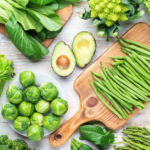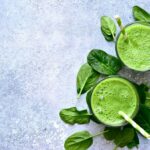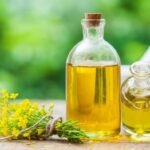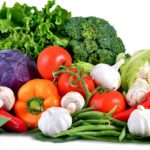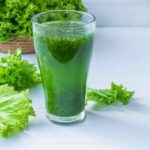Do you know where ginger grows? This blog will explore ginger’s history and cultural significance, its economic importance, and its production and consumption trends. We will discuss the significant ginger-producing countries, climate and soil requirements for ginger cultivation, propagation methods, harvesting and processing techniques, and value-added products. We will examine consumer preferences, global supply and demand, production and trade laws, and market and trade trends for ginger.
Finally, we will explore the future prospects for ginger production and consumption, including technological advancements, value addition, and organic and fair trade markets. Whether you’re a foodie, a health enthusiast, or an agricultural stakeholder, this blog will provide valuable insights into the fascinating world of ginger.
What is Ginger and its Importance

A flowering plant in the Zingiberaceae family, ginger is one of them. Its scientific name is Zingiber officinale. Ginger is widely known for its culinary and medicinal properties. The edible part of the ginger plant is its rhizome, which is a horizontal stem that grows underground.
Since ancient times, the rhizome has been employed in traditional medicine. It has a particularly spicy and pungent flavor and is frequently used as a flavoring component in various meals and beverages.
Ginger has a variety of important uses and benefits. Some of the key ones include:
Culinary uses:
Ginger is commonly used as a spice in cooking, particularly in Asian, Indian, and Middle Eastern cuisines. It is often used in savory dishes, such as curries and stir-fries, as well as in sweet dishes, such as gingerbread and ginger snaps.
Medicinal properties:
For millennia, people have used ginger for its therapeutic powers. It is believed to have anti-inflammatory, anti-nausea, and pain-relieving effects, among other benefits. It is commonly used to treat digestive issues, such as nausea and bloating.
Health benefits:
Ginger has numerous health benefits. It is high in antioxidants, which can help protect against cellular damage and reduce the risk of chronic diseases. It may also have cholesterol-lowering effects and may help improve brain function.
Economic importance:
Ginger is an important agricultural crop in many countries, particularly in tropical regions. It is a valuable export commodity and can provide income and employment opportunities for farmers and others involved in the ginger trade.
Origin of Ginger

The exact origin of ginger is not known, but it is believed to have originated in Southeast Asia, specifically in the tropical rainforests of the Indian subcontinent. It has been cultivated for over 5,000 years and has been used in various forms, including fresh, dried, and powdered, for culinary and medicinal purposes.
The ancient Chinese, Indians, and Middle Easterners were among the first to use ginger for medicinal purposes, and it was later introduced to Europe by the Romans. The spice trade between Asia and Europe further spread the use of ginger, and it became a popular ingredient in cooking throughout the world.
Today, ginger is grown in many tropical and subtropical regions, including India, China, Thailand, Nigeria, and Jamaica, among others. However, India and China are the largest producers of ginger, with India accounting for more than half of the world’s ginger production.
Historical background
Ginger has a long and rich history, dating back thousands of years. Here are some key historical facts about ginger:
Chinese and Indian texts dating back to around 3000 BC mention ginger as a medicinal herb. It was believed to have a warming effect on the body and was used to treat various ailments, including digestive issues, respiratory problems, and arthritis. It was a highly prized commodity in ancient Rome and was imported from Asia at great expense.
It was used in a variety of dishes, as well as in cosmetics and perfumes. During the Middle Ages, ginger was used to make gingerbread, a popular sweet treat in Europe. In the 16th century, ginger became one of the most valuable spices in Europe, second only to pepper.
It was used to flavor beer, ale, and wine, as well as in various sweet and savory dishes. In the sixteenth century, colonizers from Spain and Portugal introduced ginger to the Americas. It quickly became famous in Caribbean cuisine, particularly in Jamaica where it is still widely grown and used today.
In the 19th century, ginger beer, a non-alcoholic carbonated beverage made from ginger, became popular in England and was later exported to other parts of the world.
Ginger in different cultures:
Ginger has been used in various cultures around the world for centuries, both as a spice and for its medicinal properties. Here are a few examples of how ginger is used in different cultures:
Chinese culture:
Ginger has been a part of traditional Chinese medicine for thousands of years. It is believed to have a warming effect on the body and is often used to treat digestive issues, colds, and flu.
Indian culture:
Ginger is widely used in Indian cuisine, particularly in curries and chai tea. It is also used in Ayurvedic medicine, where it is believed to have anti-inflammatory and antioxidant properties.
Middle Eastern culture:
In the Middle East, ginger is often used to flavor sweet and savory dishes, as well as in tea. It is also believed to have medicinal properties and is used to treat digestive issues, nausea, and inflammation.
Jamaican culture:
Ginger is a key ingredient in Jamaican cuisine, where it is used to flavor jerk chicken, curry goat, and other dishes. It is also used to make ginger beer, a non-alcoholic carbonated beverage that is popular in Jamaica and other Caribbean countries.
European culture:
Ginger has been used in European cuisine since the Middle Ages and was particularly popular in England during the 18th and 19th centuries. It is used to flavor sweet and savory dishes, as well as in baking, where it is used to make gingerbread and other baked goods.
Major ginger-producing countries

Ginger is grown in many countries around the world, but some of the major ginger-producing countries include:
India:
India is the largest producer of ginger in the world, accounting for more than 50% of global production. The states of Kerala, Karnataka, and Maharashtra are among the top ginger-producing regions in India.
China:
China is the second largest producer of ginger, with the provinces of Shandong, Anhui, and Zhejiang being major ginger-growing regions.
Nepal:
Nepal is a significant producer of ginger, with the districts of Kaski, Chitwan, and Lamjung being major ginger-growing areas.
Indonesia:
Indonesia is a major producer of ginger, with the provinces of Java, Bali, and Sulawesi being major growing regions.
Thailand:
Thailand is a significant producer of ginger, with the provinces of Chiang Mai, Chiang Rai, and Lamphun being major ginger-growing regions.
Nigeria:
Nigeria is the largest producer of ginger in Africa and is a significant producer on the global market.
Climate and soil requirements for ginger cultivation
Ginger cultivation requires a warm and humid climate, with temperatures ranging between 20-35°C (68-95°F) and annual rainfall of around 1500-2500 mm. The plant prefers well-drained, loamy soil that is rich in organic matter, with a pH range of 5.5-6.5.
Here are some specific requirements for ginger cultivation:
Temperature:
Ginger grows best in a warm climate with temperatures between 20-35°C (68-95°F). The plant does not tolerate frost and requires temperatures above 10°C (50°F) for growth.
Rainfall:
Ginger requires a high amount of rainfall or irrigation, with an annual rainfall of around 1500-2500 mm. However, excessive rainfall can lead to waterlogging, which can damage the plant.
Soil:
The optimal soil for growing ginger is loamy, well-drained, and full of organic matter. The soil should be loose and crumbly, with good aeration and drainage. The pH range of the soil should be between 5.5-6.5.
Sunlight:
Ginger requires partial shade or filtered sunlight. Direct sunlight can cause the soil to dry out too quickly, which can damage the plant.
Altitude:
Ginger is typically grown at low altitudes, below 1000 meters (3280 feet) above sea level.
Growing season:
Ginger is planted in the spring or summer and harvested 8 to 10 months later, in the autumn or winter.
Varieties of ginger

There are several different varieties of ginger that are grown and used for different purposes. Here are some common varieties of ginger:
Yellow ginger:
Also known as Hawaiian ginger or turmeric ginger, this variety has a pale yellow flesh and a milder flavor than other types of ginger. It is often used for pickling and in salads.
Blue-ring ginger:
This variety has a blueish ring around the stem and is often used for medicinal purposes. It is renowned for having significant antioxidant and anti-inflammatory levels.
White ginger: This variety has thin skin and light, fragrant flesh. It is often used for making pickled ginger or as a garnish for sushi.
Baby ginger:
This is a young ginger that is harvested early before it has fully matured. Compared to mature ginger, it has a more delicate texture and flavor.
Canton ginger:
Also known as Chinese ginger, this is the most common variety of ginger used for cooking. It has thin skin, pale yellow flesh, and a strong, pungent flavor.
Jamaican ginger:
This variety is known for its high levels of essential oils, which give it a strong, spicy flavor. It is often used in Jamaican cuisine and is a key ingredient in ginger beer.
Thai ginger:
Also known as galangal, this variety has a more floral and citrusy flavor than other types of ginger. In Indonesian and Thai cooking, it is frequently utilized.
Ginger Farming

Ginger farming is the process of growing ginger as a commercial crop. It involves several steps, including land preparation, planting, fertilizing, weeding, and harvesting. Here are the basic steps involved in ginger farming:
Land preparation:
The land must be cleared of weeds and other debris and plowed to a depth of 15-20 cm (6-8 inches). The soil should be loosened and mixed with compost or other organic matter.
Planting:
Ginger is typically propagated using rhizomes, which are cut into small pieces with at least one bud or “eye.” The rhizomes are planted in furrows, spaced 20-30 cm (8-12 inches) apart, and covered with soil.
Fertilizing:
Ginger requires a lot of nutrients, especially nitrogen, and potassium, for healthy growth. Fertilizers should be applied at regular intervals, starting with a balanced fertilizer at planting time and then switching to a higher potassium fertilizer during the growing season.
Weeding:
Weeds can compete with ginger plants for nutrients and water, so it is important to keep the field weed-free. Hand weeding or mechanical weeding can be done as needed.
Irrigation:
Ginger requires regular watering, especially during the first few months after planting. Irrigation can be done using sprinklers, drip irrigation, or flood irrigation.
Propagation of ginger
Ginger is typically propagated using sections of the rhizome, which are the underground stems of the plant. Here are the basic steps involved in propagating ginger:
Select healthy rhizomes:
Choose mature ginger rhizomes that are firm, plump, and free of blemishes or damage. Avoid rhizomes that are soft, wrinkled, or moldy.
Soak the rhizomes:
Place the rhizomes in a bowl of warm water and soak them for several hours. This will help to soften the outer layer of the rhizome and stimulate the growth of the buds.
Cut the rhizomes:
Using a sharp knife, cut the rhizomes into sections that are 2-3 cm (1 inch) long, making sure that each section has at least one bud or “eye.”
Dry the sections:
Allow the cut sections to dry in a warm, well-ventilated area for a few days until the cut ends have calloused over.
Plant the sections:
Plant the sections in well-draining soil that have been enriched with compost or other organic matter. Make sure that the bud is facing upwards and the section is covered with soil to a depth of 2-3 cm (1 inch).
Water and care for the plants:
Keep the soil moist but not waterlogged, and provide the plants with filtered sunlight or partial shade. Fertilize the plants with a balanced fertilizer every 4-6 weeks.
Harvest the ginger:
Ginger can be harvested 8-10 months after planting. Carefully dig up the plants and remove the rhizomes from the soil. Replant any healthy rhizomes to continue the growing cycle.
Planting, care, and management of ginger crop
Planting, care, and management are essential for a successful ginger crop. Here are some tips on how to plant, care for, and manage your ginger crop:
Preparing the Soil:
Ginger grows well in well-drained, loamy soils that are rich in organic matter. Before planting, prepare the soil by adding compost or manure and tilling it to a depth of 20-25 cm. Ensure that the soil is loose and friable for easy root penetration.
Planting:
Ginger is usually propagated by planting ginger rhizomes or seed pieces. Choose healthy, disease-free rhizomes and soak them in water overnight before planting. Plant the rhizomes at a depth of 5-7 cm and a distance of 20-30 cm between rows and 15-20 cm between plants.
Watering:
Ginger requires regular watering, especially during the first 2-3 months after planting. Make sure the soil is kept damp but not soggy. Irrigate the crop once or twice a week, depending on the weather conditions.
Fertilization:
Apply a balanced fertilizer such as NPK (nitrogen, phosphorus, potassium) at the time of planting and 30 days after planting. Apply the fertilizer in a band around the plants to avoid contact with the rhizomes.
Weeding:
Keep the crop weed-free by removing weeds manually or using a hoe or cultivator. Regular weeding is necessary to avoid competition for nutrients and water.
Pest and Disease Control:
Ginger is prone to pests and diseases such as root-knot nematodes, bacterial wilt, and ginger rhizome rot. Use organic or chemical pesticides to control pests and diseases, and ensure that the crop is regularly monitored for signs of infestation.
Harvesting:
Ginger is ready for harvesting 8-10 months after planting, when the leaves start turning yellow and the stem begins to dry up. Harvest the rhizomes carefully by digging them up with a fork or shovel. Leave the rhizomes to dry in the sun for a few days before cleaning and sorting them.
Harvesting and processing of ginger
Harvesting and processing ginger involve several steps, including digging up the ginger rhizomes, cleaning, and drying them. Here are the basic steps involved in harvesting and processing ginger:
Harvesting: Ginger is typically harvested 8-10 months after planting when the leaves begin to yellow and the stems start to dry out. To harvest, carefully dig up the plants and remove the rhizomes from the soil.
Cleaning: Once the ginger rhizomes have been harvested, they should be cleaned to remove any soil, debris, or plant material. This can be done by gently scrubbing the rhizomes under running water.
Drying: After cleaning, the ginger should be dried to prevent spoilage and increase its shelf life. Drying can be done in the sun, in a dehydrator, or in an oven at a low temperature. The rhizomes should be spread out in a single layer and turned frequently until they are completely dry and brittle.
Peeling: Once the ginger is dry, the skin can be peeled off using a knife or peeler. This is not necessary but can improve the appearance and flavor of the ginger.
Slicing or grating: The ginger can then be sliced or grated, depending on how it will be used. Sliced ginger is typically used for tea or in stir-fries, while grated ginger is used in sauces, marinades, and baked goods.
Storing: To store ginger, keep it in an airtight container in a cool, dry place. It will keep for several months if properly dried and stored.
Read about planting
Economic Importance of Ginger

Ginger has significant economic importance due to its use in various industries. Here are some of the key economic benefits of ginger:
Culinary uses:
Ginger is a popular spice used in a variety of dishes and culinary applications, including teas, baked goods, sauces, and marinades. As a result, there is a steady demand for ginger in the food industry.
Medicinal uses:
Due to its anti-inflammatory and antioxidant characteristics, ginger has long been utilized in traditional medicine. It is commonly used to treat nausea, vomiting, and indigestion, among other ailments. As interest in natural and alternative medicine grows, the demand for ginger as a medicinal herb is increasing.
Export trade:
Ginger is grown in many countries, including India, China, Nigeria, and Thailand, and is a significant export commodity. In 2020, global exports of ginger were valued at over $1.1 billion.
Employment:
Ginger cultivation provides employment opportunities for farmers and laborers in many parts of the world. It is also an important source of income for small-scale farmers who grow ginger as a cash crop.
Value-added products:
Ginger can be processed into various value-added products, such as ginger oil, ginger powder, and ginger candy. These products have higher value and can be sold for a premium compared to raw ginger.
Ginger trade and market trends
Ginger is traded as a commodity in the global market, with a significant amount of production being exported from countries such as China, India, and Nigeria. Here are some of the key trends and factors influencing the ginger trade and market:
Increasing demand:
There is a growing demand for ginger globally, driven by its use in culinary and medicinal applications. In particular, there is an increasing interest in natural and alternative medicine, which has boosted the demand for ginger as a health supplement.
Export markets:
China is the largest exporter of ginger, followed by Thailand, India, and Nigeria. The United States, the United Kingdom, and Germany are some of the largest importers of ginger.
Price volatility:
Ginger prices can be volatile due to factors such as weather conditions, crop yields, and global supply and demand. In recent years, prices have fluctuated due to the impact of the COVID-19 pandemic on trade and supply chains.
Organic and fair trade:
There is a growing demand for organic and fair-trade ginger, particularly in developing countries where consumers are increasingly concerned about the environmental and social impacts of their purchasing decisions.
Value-added products:
Ginger can be processed into various value-added products, such as ginger oil, ginger powder, and ginger candy. These products have higher value and can be sold for a premium compared to raw ginger.
Economic benefits of ginger cultivation
Ginger cultivation has several economic benefits, especially in countries where it is a major cash crop. Here are some of the key economic benefits of ginger cultivation:
Income generation:
Ginger cultivation provides income for farmers, farm laborers, and traders. In countries such as India, Nigeria, and China, ginger farming is an important source of livelihood for many small-scale farmers.
Employment opportunities:
Ginger farming requires a significant amount of manual labor, providing employment opportunities for farm laborers. This is particularly important in rural areas where alternative sources of employment may be limited.
Export earnings:
Ginger is a significant export commodity, with major producing countries exporting to international markets. This provides an opportunity for countries to earn foreign exchange and boost their economy.
Value addition:
Ginger can be processed into various value-added products, such as ginger oil, ginger powder, and ginger candy. These products have higher value and can be sold for a premium compared to raw ginger, providing an opportunity for farmers and traders to capture more value from their produce.
Food security:
Ginger cultivation contributes to food security, especially in regions where it is a dietary staple. The availability of ginger ensures that local communities have access to nutritious and flavorful ingredients for their meals.
Key points

Here are the key points about ginger:
Ginger is a flowering plant that is widely cultivated for its edible rhizome, which is used in various culinary and medicinal applications.
Ginger is believed to have originated in Southeast Asia and has been used in traditional medicine for thousands of years.
Ginger is cultivated in various countries, with major producing countries including China, India, and Nigeria.
Ginger farming requires specific climate and soil conditions, and it can be propagated by planting ginger rhizomes.
Ginger cultivation has several economic benefits, including income generation, employment opportunities, export earnings, value addition, and food security.
The ginger trade and market are influenced by factors such as global supply and demand, consumer preferences, and production and trade policies.
The demand for ginger is increasing globally, driven by its use in culinary and medicinal applications, as well as the growing interest in natural and alternative medicine.
Ginger can be processed into various value-added products, such as ginger oil, ginger powder, and ginger candy, which have higher value and can be sold for a premium compared to raw ginger.
Future Prospects for ginger production and Consumption

The future prospects for ginger production and consumption look positive, driven by various factors:
Growing demand:
There is a growing demand for ginger, driven by its use in culinary and medicinal applications. As consumers become more health conscious, the demand for natural and alternative remedies is expected to increase, boosting the demand for ginger.
Increasing production:
Ginger production is increasing globally, as more countries invest in ginger farming and improve their production techniques. This is expected to result in a more stable supply of ginger in the market, reducing price volatility.
Value-added products:
The production of value-added products from ginger, such as ginger powder, ginger oil, and ginger candy, is expected to increase. These products have higher value and can be sold for a premium, providing an opportunity for farmers and traders to capture more value from their produce.
Organic and fair trade:
The demand for organic and fair trade ginger is expected to increase, as consumers become more conscious of the environmental and social impacts of their purchasing decisions.
Technological advancements:
Advancements in technology, such as precision agriculture and genetic engineering, are expected to improve ginger farming and increase yields.
